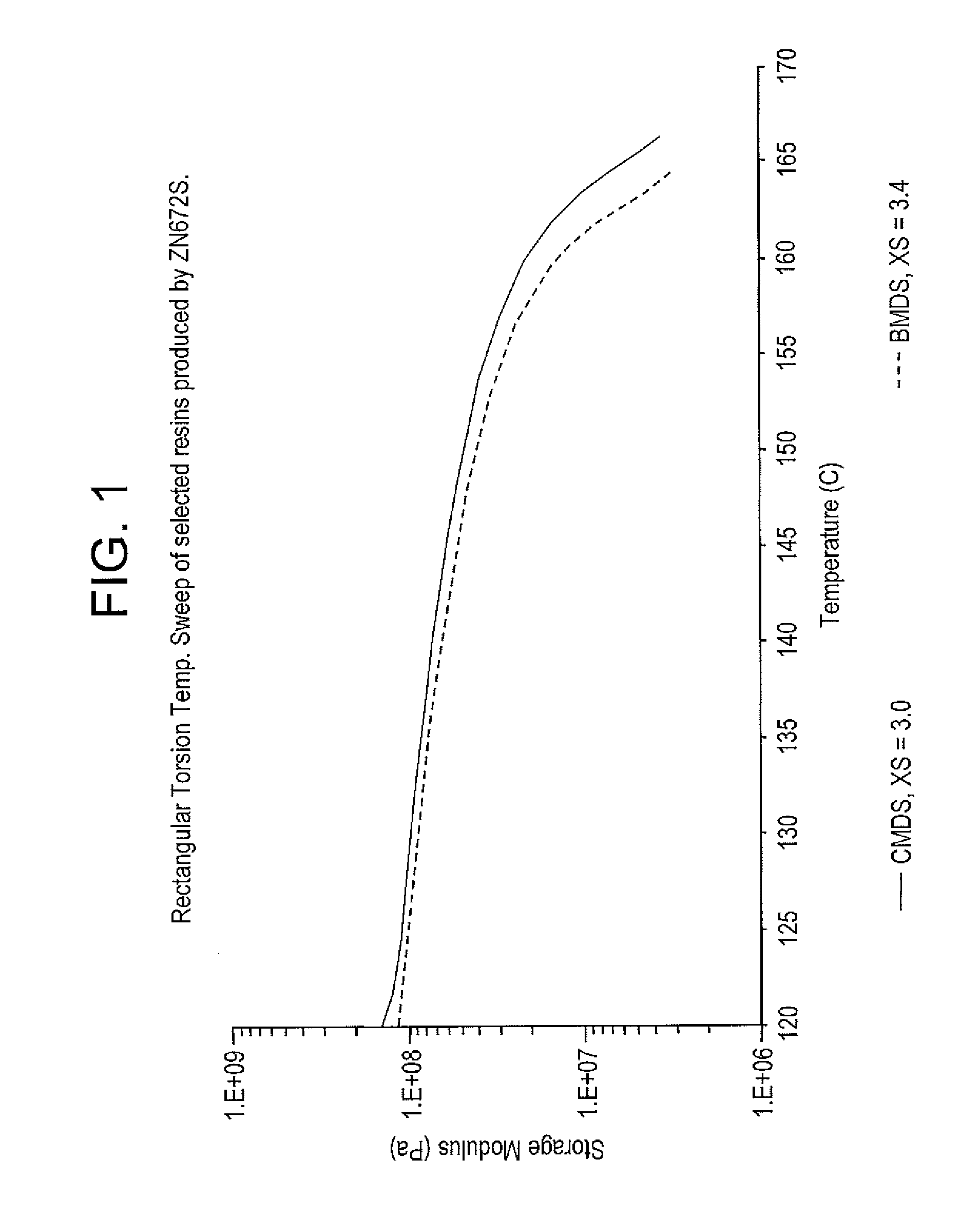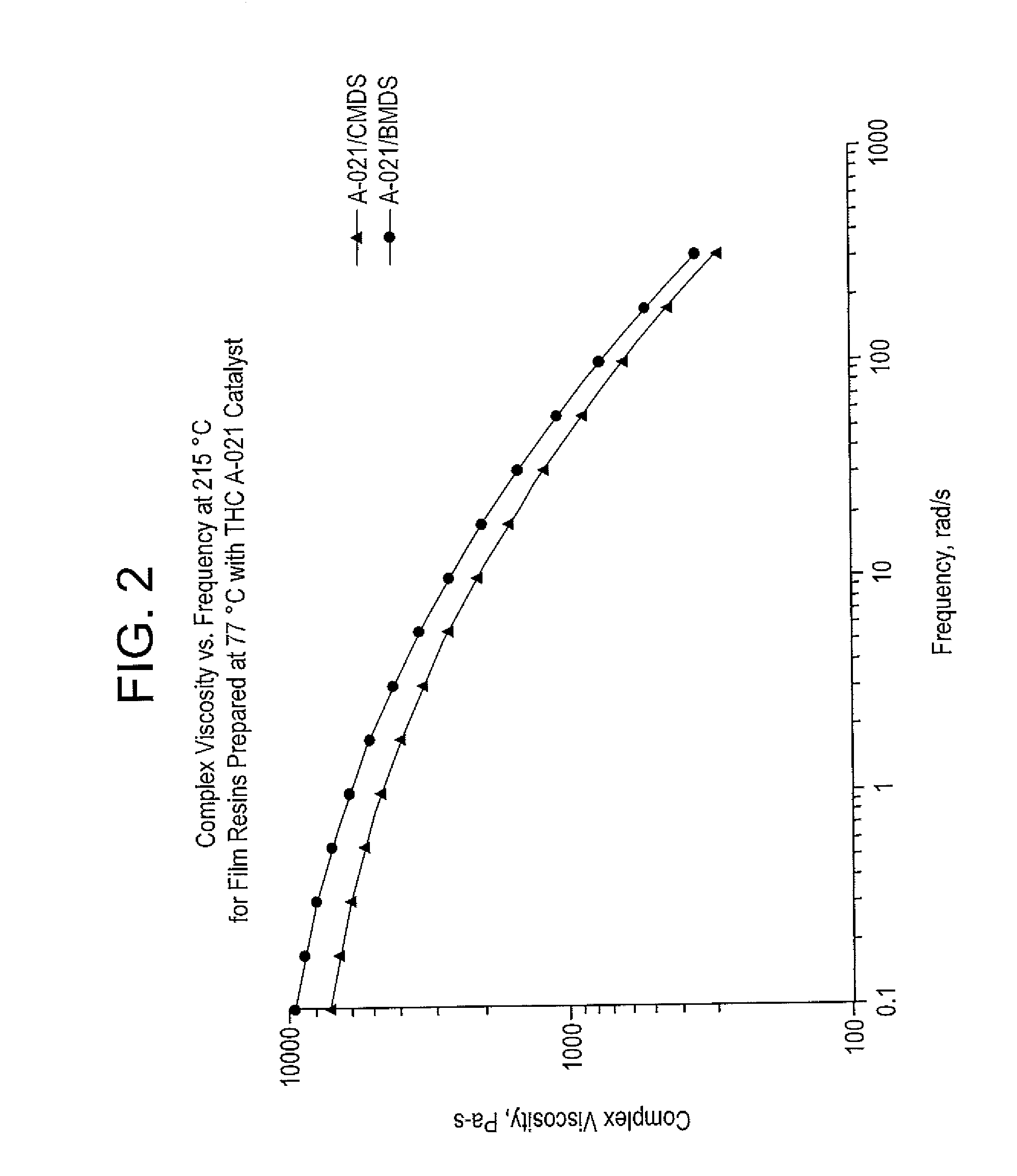Succinate-Containing Polymerization Catalyst System Using n-Butylmethyldimethoxysilane for Preparation of Polypropylene Film Grade Resins
a technology of n-butylmethyldimethoxysilane and polypropylene, which is applied in the direction of catalyst activation/preparation, chemical/physical processes, bulk chemical production, etc., can solve the problem of reducing activity and hence catalyst productivity
- Summary
- Abstract
- Description
- Claims
- Application Information
AI Technical Summary
Problems solved by technology
Method used
Image
Examples
examples
[0054]Polymerization experiments were conducted at 70° C. to prepare resins with melt-flow and xylene soluble levels near those required by film-grade consumers, Table 1. Homopolymers were produced with CMDS, BMDS, BPIQ, and CPDS. The polymer MWD was determined by gel permeation chromatography (GPC). ZN672S (available from Basell, and containing a succinate internal donor and a phthalate internal donor) gives broad MWD that can be further increased by judicious external donor selection.
[0055]Incorporating 13C NMR work comparing THC A-021 (available from Toho Catalyst Ltd. and containing a phthalate internal donor) and ZN672S, it was found that the meso pentad fraction is lower for THC A-021 for each specific donor, Table 2. However, the results clearly show that BMDS yields desirably lower microtacticities than do the other silane donors, and the succinate-containing catalyst, ZN672S, yields desirable broader polymer molecular weight distributions than does the phthalate-containing ...
PUM
| Property | Measurement | Unit |
|---|---|---|
| mol % | aaaaa | aaaaa |
| polydispersity | aaaaa | aaaaa |
| molar ratio | aaaaa | aaaaa |
Abstract
Description
Claims
Application Information
 Login to View More
Login to View More - R&D
- Intellectual Property
- Life Sciences
- Materials
- Tech Scout
- Unparalleled Data Quality
- Higher Quality Content
- 60% Fewer Hallucinations
Browse by: Latest US Patents, China's latest patents, Technical Efficacy Thesaurus, Application Domain, Technology Topic, Popular Technical Reports.
© 2025 PatSnap. All rights reserved.Legal|Privacy policy|Modern Slavery Act Transparency Statement|Sitemap|About US| Contact US: help@patsnap.com



